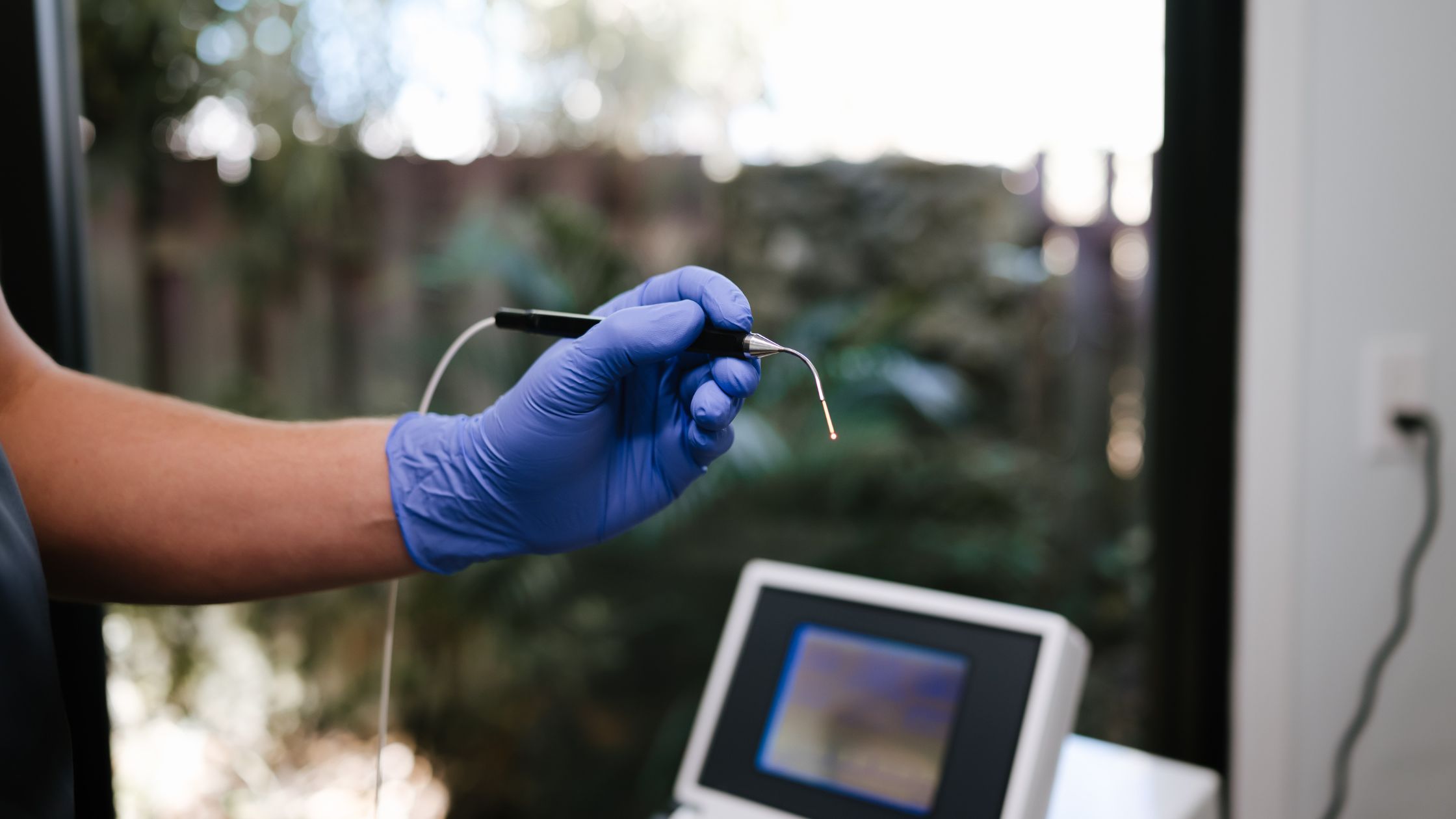Millions of people are diagnosed with gum disease every year, which often includes symptoms like inflamed gums, bleeding, sensitivity, and even bone or tooth loss. Gum disease can be one of the most devastating oral health conditions, and prompt treatment is key to minimizing the damage. However, traditional gum disease treatment isn’t always popular. It’s an invasive surgery, which sounds frightening to many patients. Others are concerned about the potential for a lengthy recovery time.
The good news is that many periodontists are changing how they treat gum disease. Today, there is a less invasive, modern solution that has become very popular, and that is Laser-Assisted New Attachment Procedure, also known as LANAP.
How Does Laser Periodontal Treatment Work?
Lasers have been used in the dental industry since 1989, but they’ve become more powerful and effective over time. LANAP uses a very thin, high-powered FDA-approved laser to treat gum disease without cutting or stitching. Here is a quick overview of what you can expect during the procedure:
1. Consultation
One of the best things about LANAP is that the majority of patients will qualify, but your periodontist still needs to do an initial evaluation and an extensive review of your medical history. A full exam will be performed to gauge the severity of the gum disease and determine if laser periodontal treatment makes sense. LANAP is ideal for moderate to severe cases of gum disease, but gingivitis can often be treated through a dental deep cleaning. Once your periodontist has decided LANAP is right for you, you can schedule an appointment for treatment.
2. The Laser Will Be Used To Target Diseased Tissue
The first step of LANAP is to leverage the laser to remove infected tissue. You’ll receive a local anesthetic before the procedure begins to minimize discomfort. Then, your periodontist will run the laser over your gums. The laser is naturally drawn toward infected tissue because it’s darker in color — and this allows healthy tissue to remain intact. The laser is incredibly powerful, so it’s even able to reach bacteria deep in the gum pockets.
3. Ultrasonic Cleaning
Once the diseased tissue is removed, plaque and tartar must be removed from the roots of the teeth. Your periodontist will use an ultrasonic scaler, which produces high-frequency vibrations, to thoroughly clean the area. This step is critical to help reduce the chances of future flare-ups.
4. A Second Laser Pass
The first pass of the laser is to eliminate diseased tissue, but a second pass is necessary to promote blood clotting and sterilization. The laser is able to help the gum tissue form a stable blood clot, which essentially closes the open gum pockets. This will prevent bacteria from making their way back in there.
5. Tissue Reattachment
Following the procedure, your gums will begin to heal, and they should begin to reattach to the gums. LANAP stimulates the growth of healthy new gum tissue, which will form around the teeth. It may also help to stimulate bone regeneration, which is especially important if you’ve experienced any alveolar bone loss. Plus, because the laser sterilizes the gum tissue, there is a smaller chance of reinfection during recovery.
While it may take several months to see results, any pain or discomfort should subside within a couple of days to a couple of weeks.
Is Laser Periodontal Treatment Right For Me?
LANAP is a good fit for the majority of patients with moderate to severe gum disease, but the only way to know for sure is to visit your periodontist. Here are reasons why your provider may recommend laser periodontal treatment.
1. You’re Nervous About Traditional Surgery – If you can’t tolerate the thought of traditional flap surgery, LANAP is a less painful, highly effective alternative. Because it doesn’t require incisions, it’s less intimidating for many.
2. You Need A Quick Recovery – The downside of gum disease surgery is it can take many months to recover, and the post-op period can be painful. While patients may experience some discomfort after LANAP, the recovery is much shorter and easier.
3. You Have Severe Gum Disease – LANAP usually isn’t necessary for patients with minor gum disease or gingivitis. There are easier, more effective ways to treat mild gum disease.
4. You Are Healthy – Because tissue and bone regrowth are such an important part of LANAP, your body needs to be able to heal, and therefore, good health is a necessity.
If you want to learn more about laser periodontal treatment, schedule an appointment with Dr. Beauchamp at Ormond Beach Periodontics today.
